![]() AGU is all about pacing yourself. If you want to make it to the end of the week without your brain exploding from an overload of new science, you need to give it some down time. It was for this reason that I took things a little easy on Wednesday morning; I assure you that rumours that it was anything to do with a certain blogger meet-up in an Irish Pub the previous evening are totally baseless.
AGU is all about pacing yourself. If you want to make it to the end of the week without your brain exploding from an overload of new science, you need to give it some down time. It was for this reason that I took things a little easy on Wednesday morning; I assure you that rumours that it was anything to do with a certain blogger meet-up in an Irish Pub the previous evening are totally baseless.
I did, however, attend some talks at an interesting session on deformation at oblique plate boundaries, where the plate motion vector is oriented at an angle to the major structures. I was quite happy to see that in addition to all the whizz-bang 3D computer models, one of the speakers presented a huge and very complex mechanical model designed to mimic the India-Tibet collision; I find it oddly reassuring that useful tectonic research can still come out of playing with a sandbox. In another stand-out talk, Eric Kiser argued that April’s magnitude 8.6 strike-slip earthquake, located in the Indian plate about to enter the Sunda Trench, was caused by oblique convergence in this part of the plate boundary. The strike-slip faults in the overriding plate move far too slowly to accommodate all of the trench-parallel slip, and the complex rupture that generated April’s earthquake was on faults in the subducting plate with the correct orientation to take up the deficit. I thought this idea was pretty cool.
Around a fine lunch catching up with some good friends from Edinburgh I found myself wandering around the Exhibitors Hall in Moscone North (apparently the one in Moscone West is no longer monstrous enough). It is with mixed feelings I note that branded chocolate and other sweets are the new free pens of the swag universe. Perhaps you need the extra energy to make it from one end of the hall to the other. I briefly dropped in to see the Little River crew, whose awesome EmRiver stream table had the usual crowds queuing up to play-erm, assess it’s usefulness for their classes.
I started my afternoon in a session on the complicated tectonics of the Caribbean. If I didn’t think they were complicated before, I certainly did after hearing Alan Levander describe how beneath Venezuela, tomography sees a slab of the South American plate that has been subducted beneath the Caribbean, and a slab of Caribbean plate that has been subducted beneath South America, ‘locked in a deadly subducting embrace’ as they descend steeply into the mantle. I’m still working on visualising exactly how that works.
Several of the talks were on the seismic and tsunami hazard in the region. Christa von Hillebrandt made the important point that although tsunami events were less frequent in the Caribbean compared to the Pacific, which has meant less awareness of the risks, and only limited work on monitoring and warning systems, there have been six times as many tsunami fatalities in the Caribbean than in the Pacific in the past 170 years. Carol Prentice showed some preliminary paleoseismic work on the Enriquillo Fault in Haiti, which didn’t – as initially thought – rupture in the 2010 earthquake there, but still appears to be an active, seismogenic structure. They’re having problems with age control, but they’ve identified at least 3 major ruptures in the past 6,000 years or so. They’ve also found evidence, in the form of actively growing folds, for another blind thrust in the area, similar to the one that did rupture in 2010.
Finally, Susan Hough gave a very interesting talk which started with a graph showing large, systematic upward shifts in our estimates of the magnitude of large earthquakes coinciding with advances in seismometer technology, particularly their introduction at the beginning of the 20th century and the deployment of broadband instruments in the 1960s. She then used historical records of an earthquake on the Antilles arc in 1843, which was felt as far away as New York on mainland US, to argue that it may have had a magnitude of more than 8.5, rather than the previous estimates of M 7.5-8. This lower magnitude was assumed because there was no significant tsunami generated, but we know now that not all great earthquakes do generate tsunami. Perhaps, Hough finished, ‘missing’ historic great earthquakes ‘may be hiding in plain sight’ – we’ve just underestimated their magnitudes.
After refuelling with beer in the poster hall, I finished with a little more paleomagic, this time of the environmental kind. Quite a bit of the session was devoted to biogenic magnetite, which is produced by some organisms for teeth and armour and in many more for magnetoreception – the ability to detect and follow magnetic field lines. Joe Kirschvink, in his usual entertaining manner, gave an overview of the past 50 years of progress in this field (quote of the day: “Fortunately, bird retinas are eminently flattenable”).
There was also an excellent presentation from undergraduate Marcy Nadel, who was very bravely wading into the stormy waters of the Younger Dryas impact hypothesis. She presented detailed magnetic profiles of soil horizons that cross the Younger Dryas boundary. There was no significant shifts or changes in the composition or concentrations of magnetic particles across the boundary, which seems to contradict the reports of unusually high concentrations of magnetic spherules that have been cited as evidence for an impact event, including at one of the sites she sampled. This was good, detailed work, and although Nadel was careful not to say so explicitly, it’s clear the pro-impact camp haven’t won this round.
It was at this point that I was very glad that I’d paced myself this morning, because my brain was full. Nonetheless, after a quiet night, I’m ready to rejoin the intellectual fray; and this afternoon, I’ll be on the presenting end again as I man my poster in Moscone South.


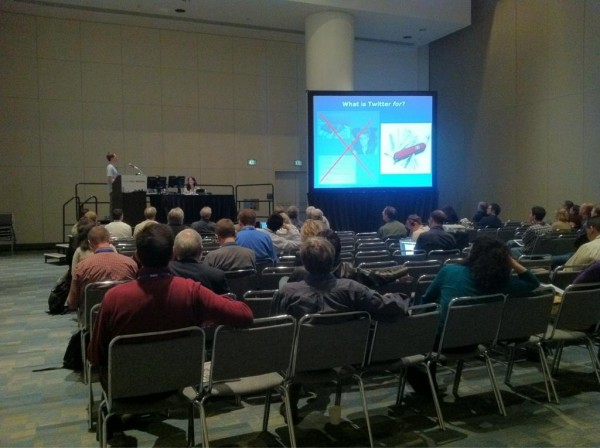

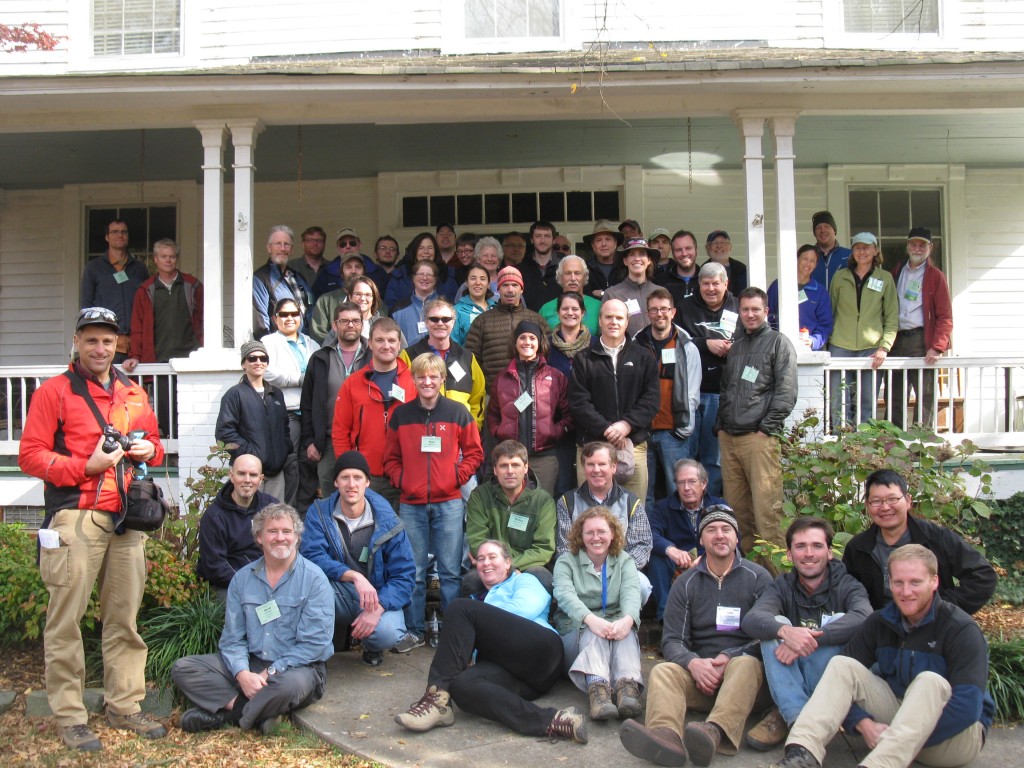

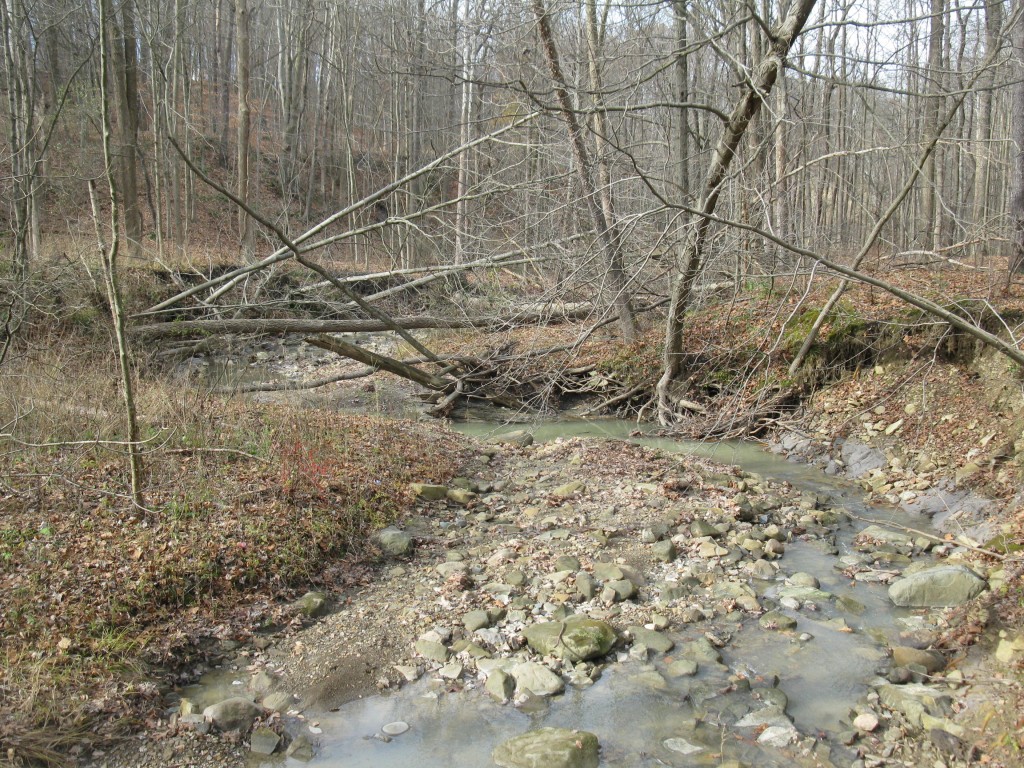



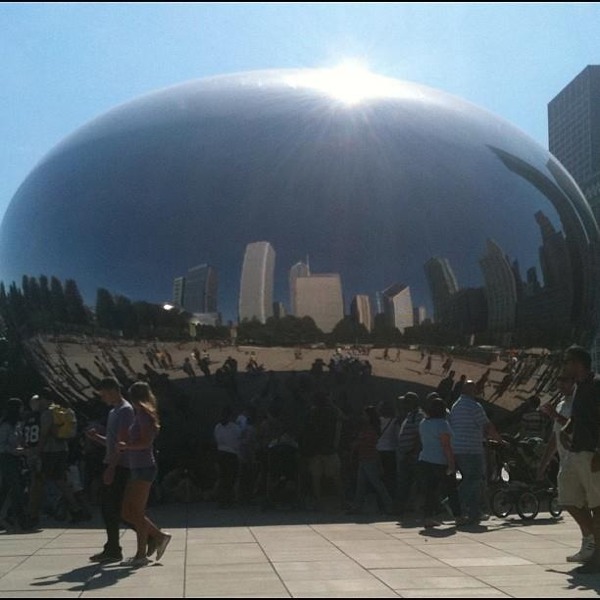
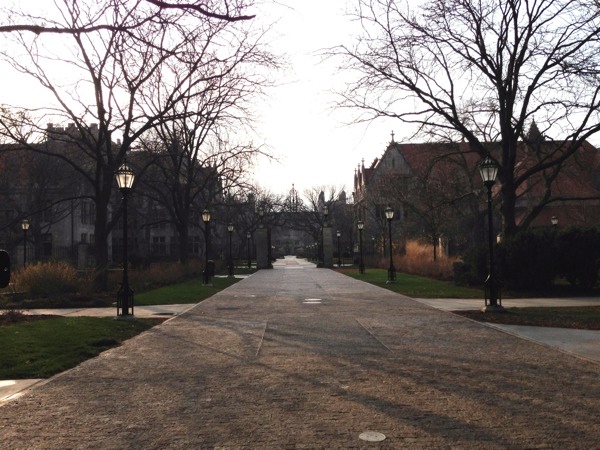


Nice plan for content warnings on Mastodon and the Fediverse. Now you need a Mastodon/Fediverse button on this blog.